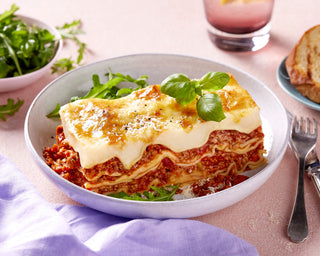
You’ve probably heard your gym-junkie mate say that they’ve been “pumping iron.” What they may have not realised is that they’re pumping iron in two forms— and no, we don’t mean a kettle bell and a dumbbell. While they’re lifting weight – whatever the form– iron is pumping oxygen within their bodies to help their muscles successfully ‘pump!’
Which leads us to iron’s job or should we say jobs. It’s famously known for storing oxygen in not only our muscles, but all around our entire body! It’s also incredibly important for our immune system, energy production, and our overall health. (1) You can source iron from a wide range of foods, but not all foods contain the same type. There are two different kinds, which differ in how efficiently they’re absorbed within our bodies. (2) We’ll touch on this later and provide some easy tips on how to maximise your iron absorption.
So, what are the two different types of iron we mentioned earlier? Let us introduce Haem Iron and Non-Haem Iron.
To start it off, “haem” comes from the word haemoglobin, which is a complex protein that carries oxygen from the lungs to the rest of the body. Iron is labelled as haem or non-haem due to its ability to be absorbed by the human body.
Haem Iron, found in animal-sources,is described as bioavailable, which means it doesn’t need to undergo a chemical change to be absorbed in the body. This is the key difference between the two types, as non-haem iron needs to undergo changes before our bodies can absorb. Non-haem iron can be found in plant products like spinach —now you see what Popeye the Sailor Man was on about! So, how can you make non-haem iron available? Luckily, iron is best mates with Vitamin C, who breaks down non-haem iron. So, a simple squeeze of lemon juice over your green leafy vegetables will assist this process!
But, this is where it can get complicated, absorption of non-haem iron can be severely comprised by other foods that contain caffeine and calcium. (1) The best way to achieve optimum absorption is to avoid drinking caffeinated beverages or high calcium foods with or immediately after your iron-rich meal. So, perhaps it’ll be best to enjoy that double shot latte for morning tea. This is very important for our plant-based friends, as non-haem iron is their main source of iron.
Are you getting enough iron in your diet?
If you find you’ve been experiencing constant headaches and/or feelings of fatigue or weakness, you may be running low on iron. (3) Iron deficiencies can be quite common, especially among those who menstruate, as well as people who follow a vegan or vegetarian diet. (4) We recommend checking in with your GP, if you fear you may be deficient. In the meantime, feel free to check out our tips on how to include more iron in your diet below.
Best Way to Crank Up the Iron!
- Consume animal-based foods that are good sources of iron: chicken liver (pate on the antipasto board counts…right!?), beef, lamb, or salmon
-
Cook and prepare plant foods to optimize iron efficiency
e.g. soaking oats overnight, choosing tempeh over tofu -
Pair these foods with vitamin C rich foods to help non-haem iron become more bioavailable
e.g. adding a generous squeeze of lemon or sprinkling of chopped capsicum -
If following a vegetarian or vegan diet, amp up iron-rich foods in your diet.
e.g. fortified grains (breakfast cereal, bread), oats, pulses, mushrooms, and dark leafy greens.
Kobe Ferteis
References:
1- Iron. Nutrition Australia. Available from: https://nutritionaustralia.org/fact-sheets/iron/
2- Iron - Better Health Channel [Internet]. Available from: https://www.betterhealth.vic.gov.au/health/ConditionsAndTreatments/iron
3- Iron Factsheet [Internet]. Nutrition Australia 2014. Available from: https://nutritionaustralia.org/app/uploads/2020/05/Iron-2014-1.pdf
4- Iron Nutrient Reference Values [Internet]. NHMRC 2021. Available from: https://www.nrv.gov.au/nutrients/iron









